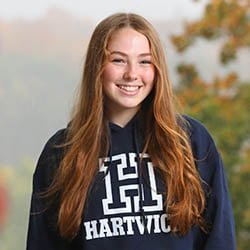Connecting students to the region with revenue and skill-building resources
In 2015, Hartwick stepped out in front with the Center for Craft Food & Beverage (CCFB), New York State’s first brewing industry resource for testing, research, training, and business development. The industry response was immediate and widespread; clients now come from across the state and the country to tap CCFB’s services. Students are involved in all aspects of the enterprise, working as lab technicians and research scientists in professional internships.
Meeting industry needs.
With the new Grain Innovation Center (GIC), Hartwick is poised to continue the CCFB’s service to small businesses, this time partnering with growers, millers, and bakers of artisanal grains. And instead of being in the campus’s Johnstone Science Center with the CCFB, the GIC is bringing Hartwick downtown to anchor the new Dietz Street Lofts and bring traffic to Oneonta’s city center.
Building skills that transfer to careers.
Students stand at the center of everything at Hartwick. So when the College develops new sources of alternative revenue, approved projects must directly support the undergraduate enterprise and create practical experiences for students. Often this equates to credential-building internships and research opportunities. Ideally, the region benefits as well, because the fortunes of this college and this community are inextricably linked.
CCFB Director Harmonie Bettenhausen successfully meets client needs, generates new business, fosters collaborations, and manages advanced equipment without ever losing sight of student’s interests and goals. “It’s part of our mission to provide unique and valuable experiences for our students,” she says.
Bettenhausen is talking about undergraduates who hone advanced lab skills, work on professional equipment, and a lot more: “Our students build confidence in their work as they practice communicating with a team and their peers. They’re gaining experience in a working lab, where they learn how to handle deadlines and understand how and why they’re providing services to clients. These are skills that will help them in the real world.”
“The experience you get in the CCFB is fundamentally different than the experience in class,” says Peyton Samuelson ’22. “You’re not working for a grade, but for a client. The pressure is on.”

